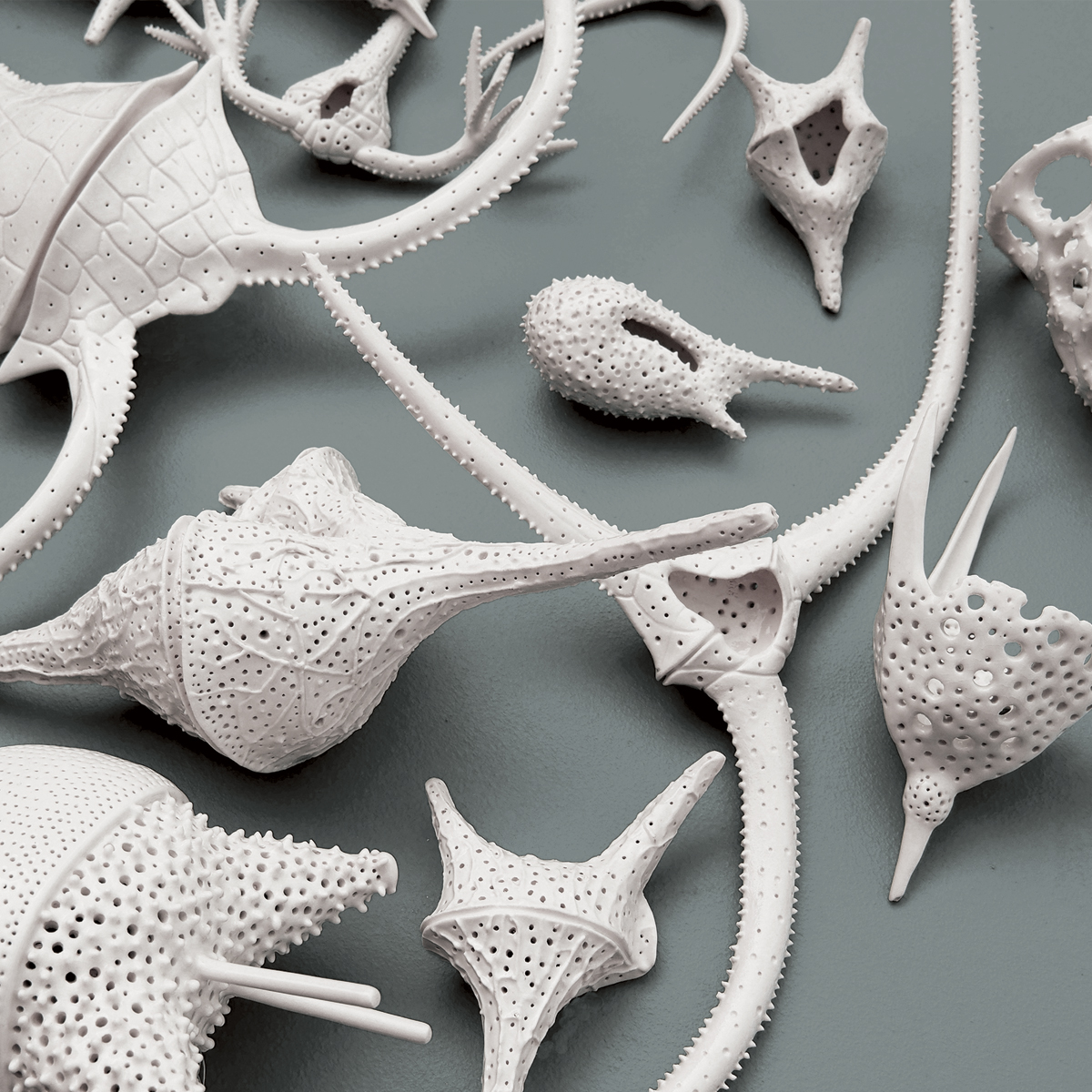
La Mer Micro-Sculpture
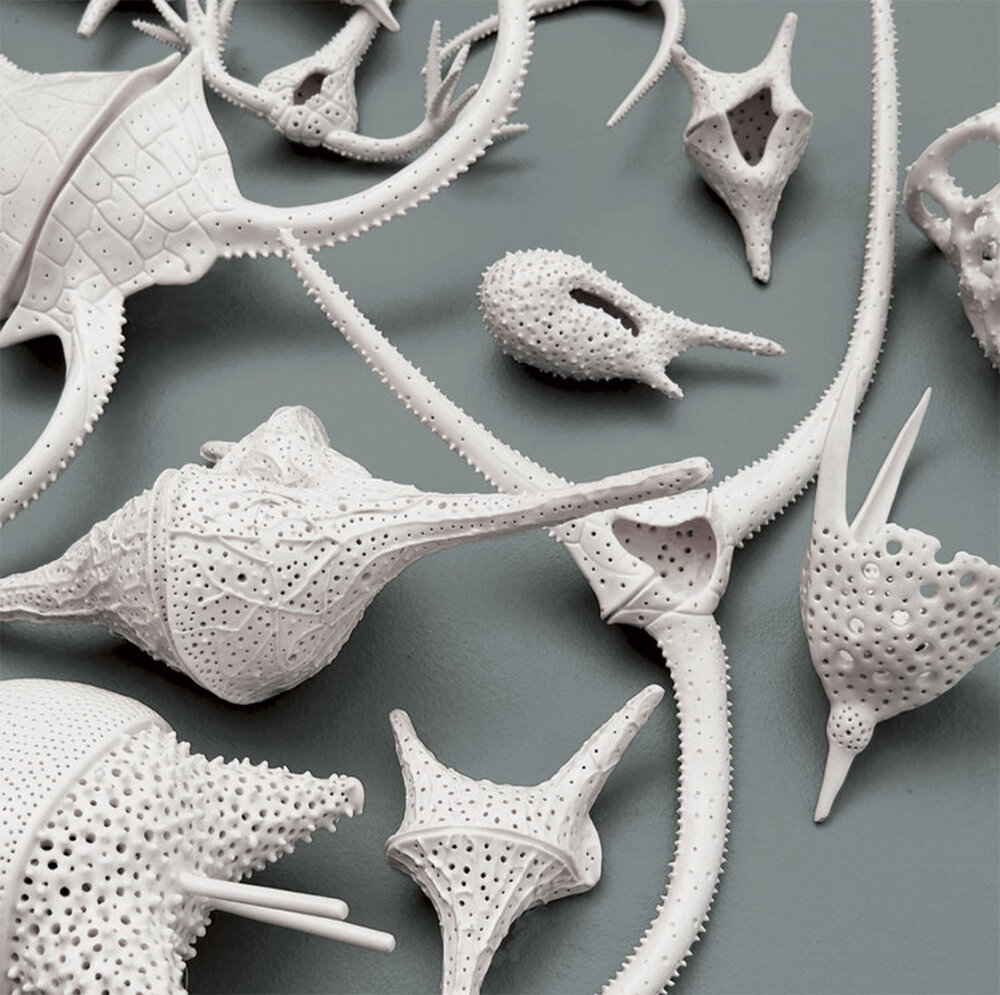
These Marine Single-Cells adapt to each environment and exhibit they inhabit featuring Radiolarians, Diatoms, Foraminifera & Dinoflagellates and more. Like all works in this series, each piece is researched, hand-built clay, airbrushed underglazes, clear glaze & luster in multiple kiln firings.
The works celebrate the extraordinary aesthetics and sustaining elements of the organisms and our vital relationship with the ocean. A timely investment in ourselves, our environment and future.
Sunlight Zone:
The ceramic reveals these exquisite and mighty microscopic marine treasures that form the basis of earth’s marine ecosystem. Marine primary producers, like diatoms, radiolarians, and single-celled algae utilize solar energy to photosynthesize over half of earth’s oxygen, supporting all life.
The micro goes macro as their blooms can be seen from space on satellite video.
Interdependent Network:
Single-celled species form extraordinary star or stellate, zig-zag, spirals and chain colonies to pool their energy, helping each other and producing more oxygen and nutrients as a result. This universal interdependence that has enable life to thrive for eons is the rhythm of Hagan’s practice. Each sculpture plays on the actual architecture of individual cells and the organisms connecting as one network.
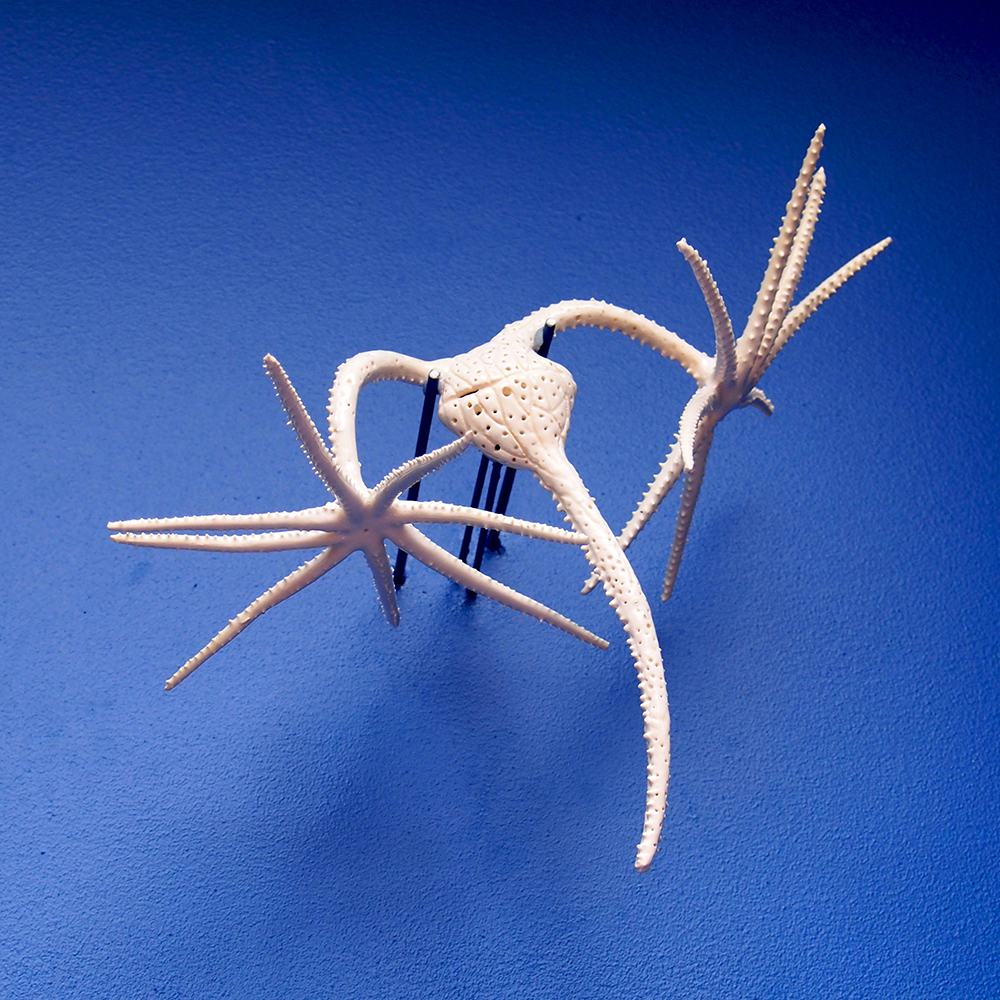
Dinoflagellate Ceratium Ranipes Spectaculare
hand-built ceramic, 10” x 10.5” x 8”
Dinoflagellate - noun Biology
Origin from Greek, dino - whirling; flagellum - small whip
The growth cycle of the ranipes is a 24-hour dramatic performance. During the sunlight hours the chloroplast filled digits bud and grow into spectacular examples like the specimen inspiring this piece. The photosynthesizing fingers use the sun’s energy to create oxygen for the planet. With solar power as its source, when the evening comes the fingers recede and disappear. This cycle repeats each day and night. Marine single-cell organisms in the sunlight zone of the ocean create more than half of the oxygen on earth.
Dinoflagellates are single-cell organism with 2 flagella, protist found in large numbers in marine plankton and also fresh water. Largest group of marine eukaryotes but substantially smaller than diatoms. Many are photosynthetic and are second only to diatoms as marine primary producers. Their cellulose structures is composed of connected sections much like parts of a mold or armor.
They are important components of the microbial loop in the oceans and help channel significant amounts of energy into planktonic food webs nurturing our vital source of oxygen. Dinoflagellates also have a pivotal role in the biology of reef-building corals.
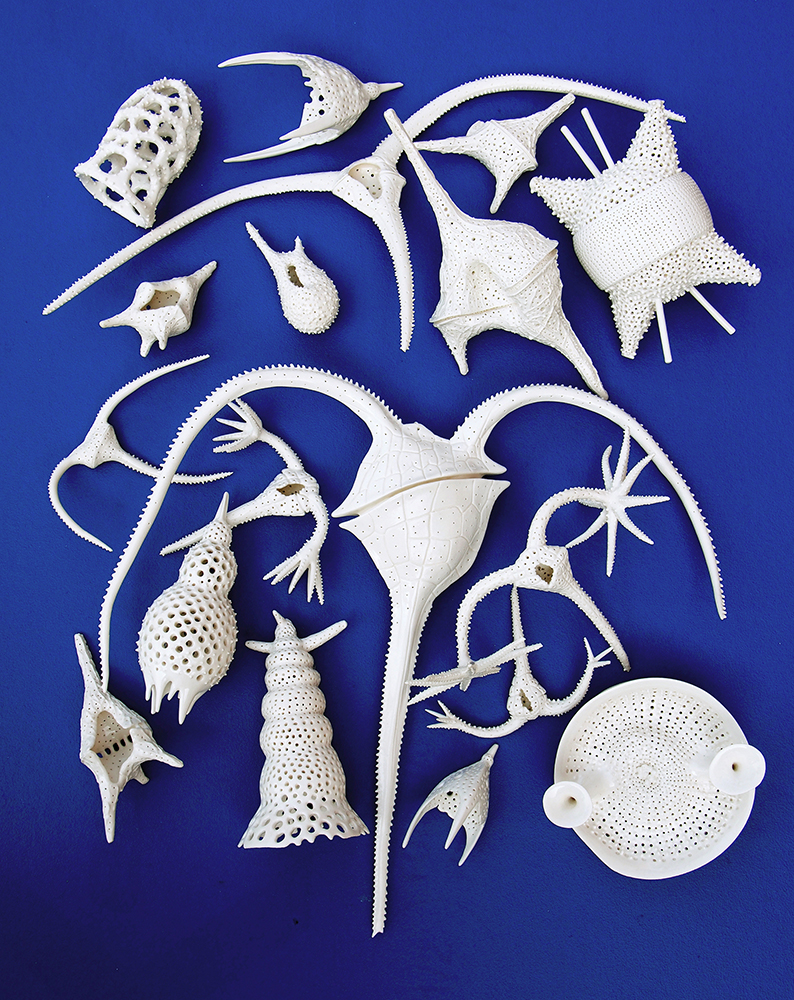
Single-Cell Mingle
hand-built ceramic, from 3” x 1.75” x 1.5” - 15” x 16” x 4”
This Single-Cell Mingle features primary producers photosynthesizing from the sunlit layer of the ocean. These one-cell microscopic beauties include radiolarians, foraminiferans, diatoms and dinoflagellates. More information about each species can be found with individual sculpture.

Radiolarians Longobardian, Pterocanium Trilobum & Androcyclas Gamphonycha detail
hand-built ceramic
6” x 3.25” x 3.5”; 5.5” x 2.75” x 2.5” & 6.5” x 2.75” x 2.75”
Radiolaria- noun Zoology.
Origin from Latin, radius - spoke of a wheel; radiolus, diminutive - little spokes.
Radiolaria are Protista- single-cell marine organisms specifically protozoa (proto: first; zoo: animal), which produce silica skeletons with extraordinary, intricate glass architecture. Radiolaria are characterized by diverse richness of forms not only in present seas but also for millions of years in former ages of our planet. The skeletons of ancient radiolarians are used in geological dating, in oil exploration and reconstructing ancient climates. Their remains cover much of the ocean floor in siliceous ooze. When the ocean bottom is lifted and transformed into land, the ooze becomes sedimentary rocks. Silica deposits, such as flint, chert and the abrasive tripoli originate from radiolarian skeletons. Fossil radiolarians have been found that date to Precambrian Time (3.96 billion to 540 million years ago).

Dinoflagellate Ceratium Vultur Trio
hand-built ceramic, 9.25” x 7” x 1.5”
Dinoflagellate - noun Biology
Origin from Greek, dino - whirling; flagellum - small whip
This Vultur Trio was inspired by the colonies these organisms form, connecting like synchronized swimmers to navigate nutrient-rich waters and work interdependently.
Info on dinoflagellates under Dinoflagellate Ceratium Ranipes
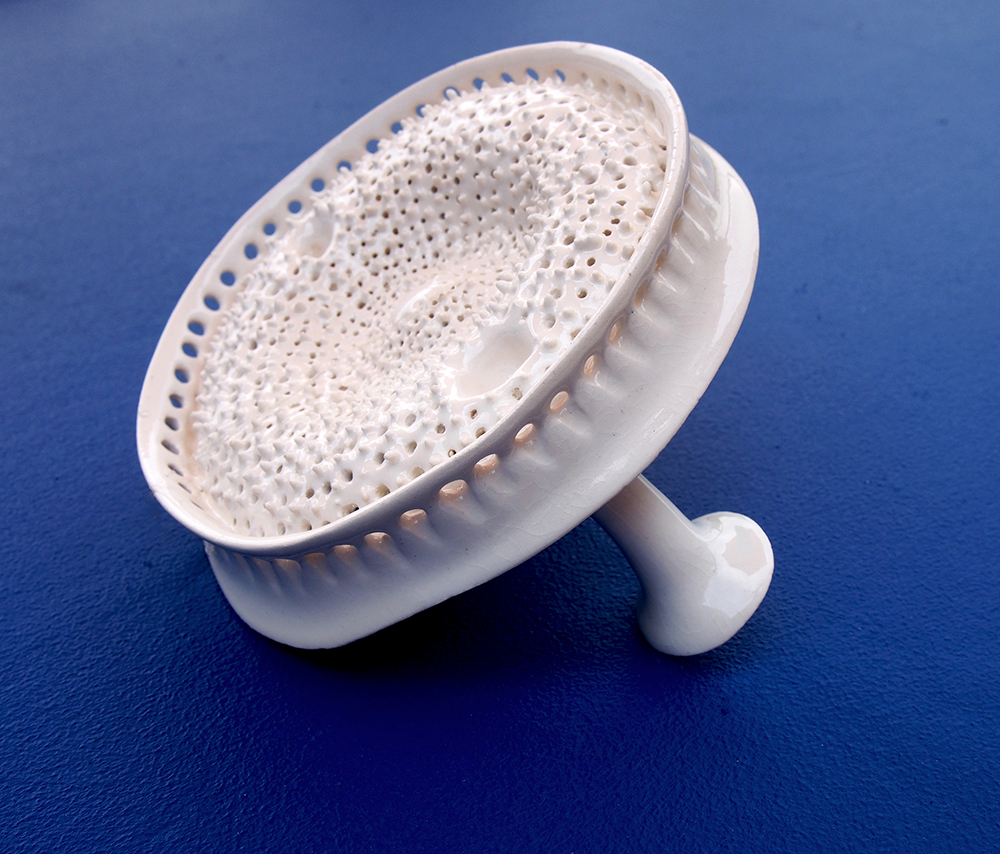
Diatom Kittonia Elaborata
hand-built ceramic, 5.25” x 5.5” x 2.5”
Diatom - noun Biology
Origin from Greek, diatomos - cut in two
Single-cell alga, most common type of phytoplankton with silica structure. Champions of photosynthesis earns its phrase: Lungs of the Earth providing over one-fourth of oxygen for the planet alone. They are important contributors to the over 50% of oxygen provided from the sunlit layer of the ocean.
Diatom communities are a tool for monitoring environmental conditions past and present and commonly used in studies of water quality. There are approximately 100,00 species (20,000-2 million). As base of the food chain they are directly linked to largest creature to live on earth: The blue whale. The majority of the giant baleines’ diet is diatoms and the tiny shrimp, krill.
When diatoms die their silica accumulates on ocean floor forming diatomaceous earth which is the composition of kiln brick. Their silica or glass structure is same material in ceramic glaze and the particulates in clay. They are an integral life force to our every fourth breath as well as the sustanence to this ceramic process making my artistic breath possible.

Diatom Kittonia Elaborata, detail
hand-built ceramic, 5.25” x 5.5” x 2.5”
Diatom - noun Biology
Origin from Greek, diatomos - cut in two
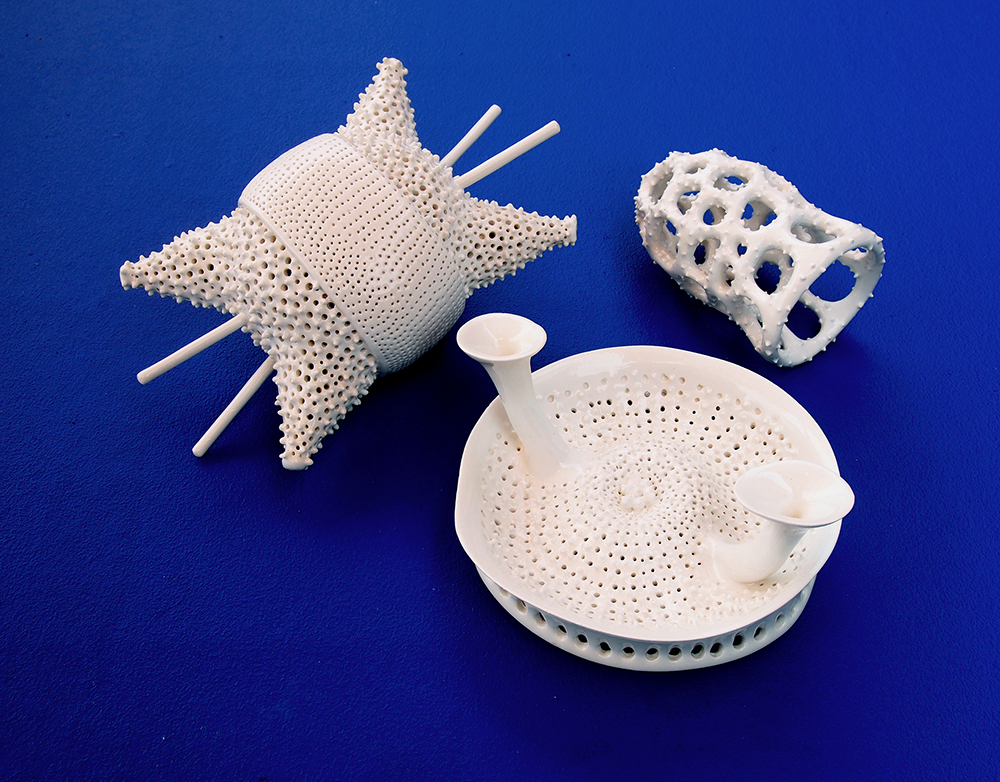
Diatoms Kittonia Elaborata & Odontella Aurita, Dictyocysta Mitra Bird Cage
hand-built ceramic, Kittonia: 5.25” x 5.5” x 2.5”; Odontella: 7.25” x 4.25” x 3” & Bird Cage: 4” x 2.75” x 2.75” &
Diatom - noun Biology
Origin from Greek, diatomos - cut in two
Foraminifera - noun Biology. Origin from Latin, hole bearer
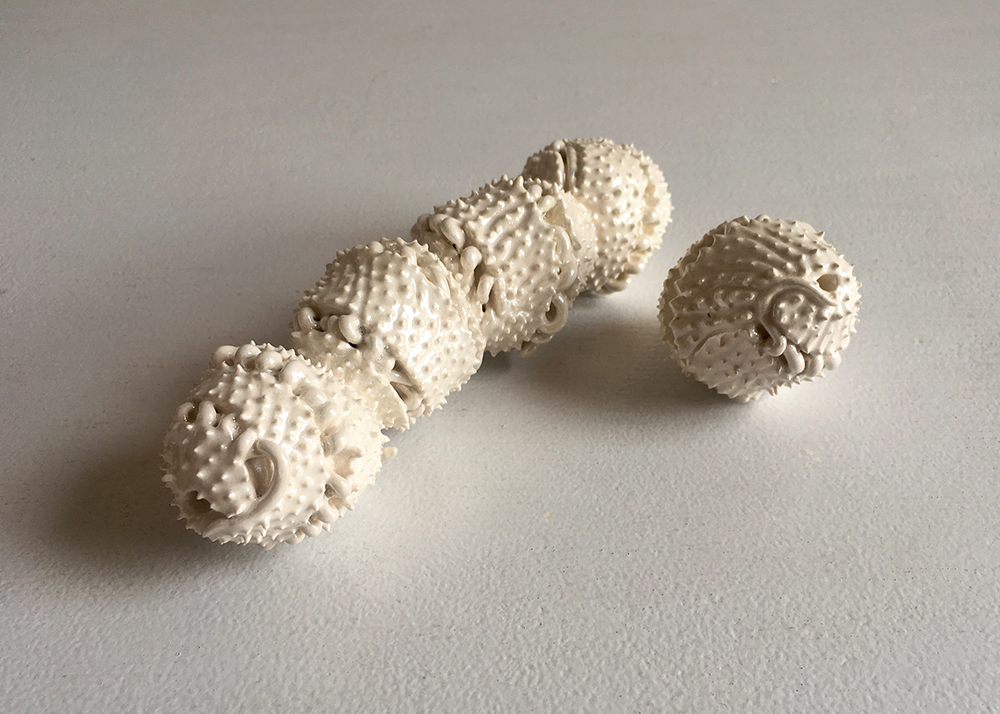
Dinoflagellata Cochlodinium Polykrikoides
hand-built ceramic, 8” x 1.5” x 1.5”
Dinoflagellate - noun Biology
Origin from Greek, dino - whirling; flagellum - small whip
This piece was inspired by the species responsible for red tide in the Chesapeake Bay. Individual cells connect to forms chain colonies in interdependent production.
Info on dinoflagellates under Dinoflagellate Ceratium Ranipes
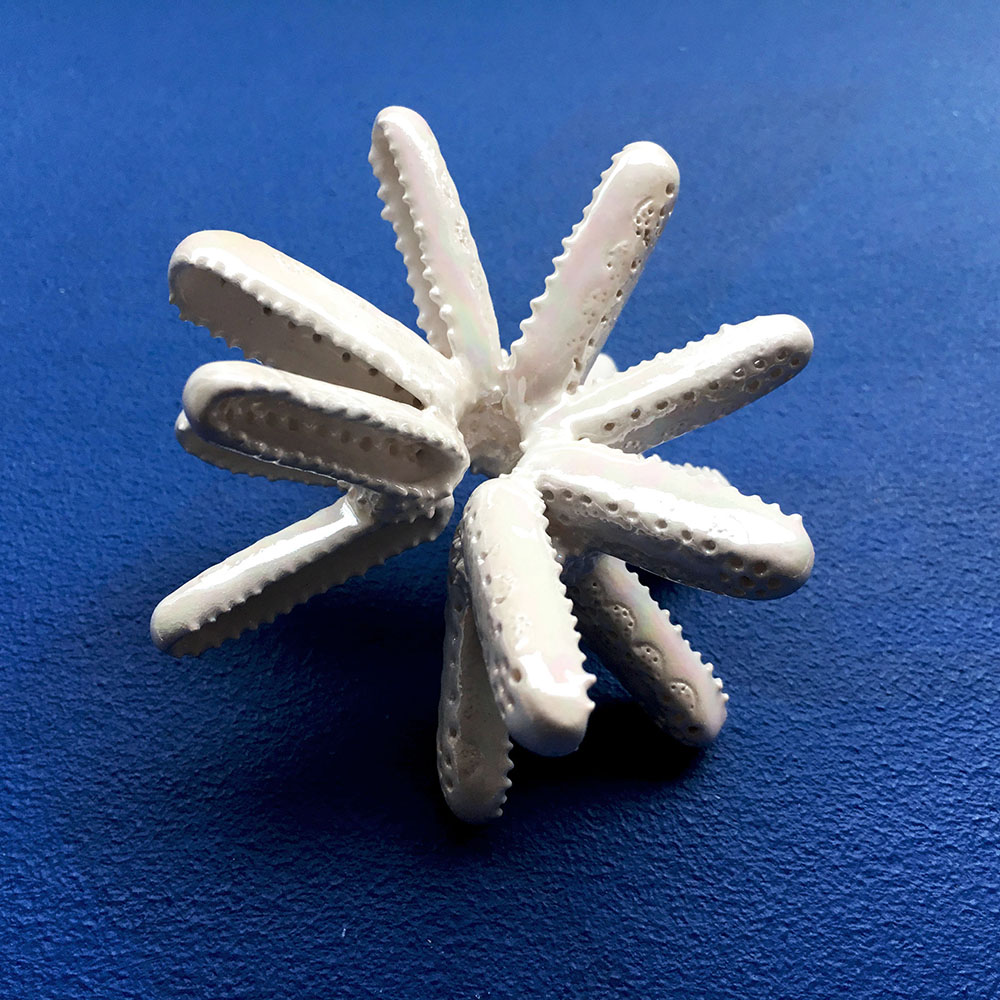
Petit Stellate Diatom Colony
hand-built ceramic, 3” x 3” x 2”
Diatom - noun Biology
Origin from Greek, diatomos - cut in two
Diatoms form exquisite and productive colonies connecting in spiral, stellate, chain and zig-zag networks economizing energies for mutual benefit. This petit piece was inspired by a stellate or star-shaped colony of this species.
More diatom info with 5th image: Diatom Kittonia Elaborata
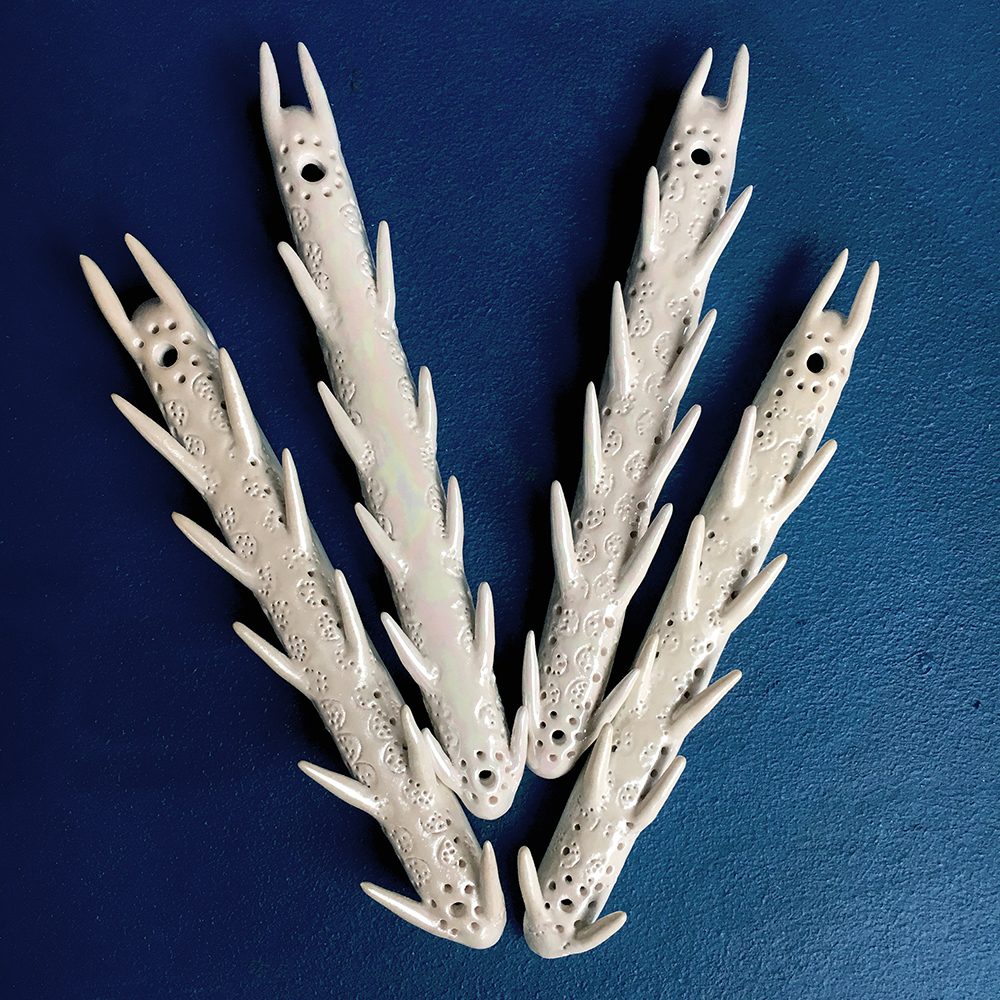
Diatom Thalassiothrix Spathulatas
hand-built ceramic, 6” x .5” x .5”
Diatom - noun Biology
Origin from Greek, diatomos - cut in two
They form exquisite and productive colonies connecting in spiral, stellate and zig-zag networks economizing energies for mutual benefit.
More diatom info with 5th image: Diatom Kittonia Elaborata.
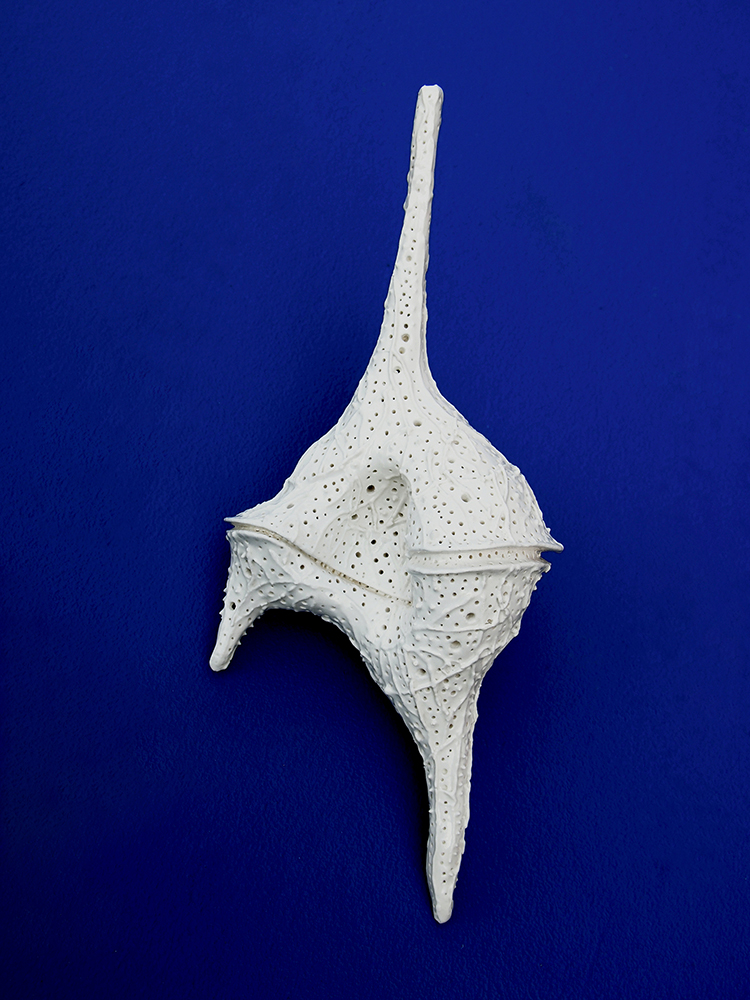
Dinoflagellate Ceratium Candelabra
hand-built ceramic, 9.5” x 4.25” x 3.5”
Dinoflagellate - noun Biology
Origin from Greek, dino - whirling; flagellum - small whip
Info on dinoflagellates under Dinoflagellate Ceratium Ranipes
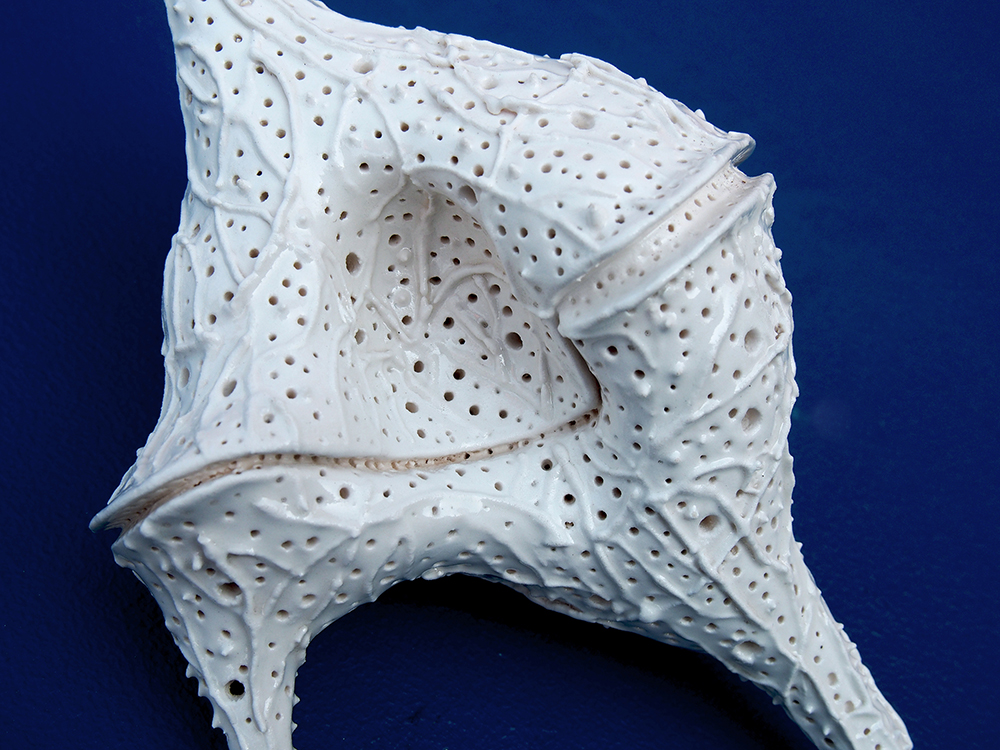
Dinoflagellate Ceratium Candelabra, detail
hand-built ceramic, 9.5” x 4.25” x 3.5”
Dinoflagellate - noun Biology
Origin from Greek, dino - whirling; flagellum - small whip
Info on dinoflagellates under Dinoflagellate Ceratium Ranipes